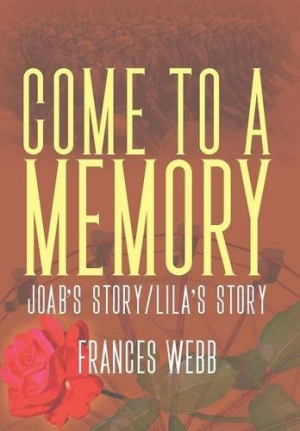Come to a Memory
Joab’s Story/ Lila’s Story
The book is especially deft at conveying the peculiar isolation of childhood.
Life in New Jersey before America’s entrance into WWII is the setting for Frances Webb’s Come to a Memory, a portrait of childhood told from the viewpoint of nine-year-old Lila Dodge.
It’s 1939 and in nearby Queens, New York, the World’s Fair offers a glimmering future that hangs in counterpoint to the war headlines coming out of Europe. Lila longs to visit one and fears the other but has her own realities to deal with. An outsider at school due to her family’s poverty and her unstylish clothes, Lila is lonely until a new student, Joab, a German refugee with a number on his arm, is seated beside her.
The book is especially deft at conveying the peculiar isolation of childhood. In a household shared with extended family, Lila’s strongest relationship is to her elaborate collection of paper dolls. Other adults who populate the book—including Joab’s adoptive parents—exist in soft focus against the sharply drawn characters of Lila and, to a lesser degree, Joab. When a wrecking crew arrives to demolish the family greenhouse, Lila tunes out the renewed accusations over who caused the family business to fail. Instead, she mourns what is, to her, the larger loss—the ruckus postpones her birthday celebration, leaving her cake untasted on the shelf.
Although the subtitle, Joab’s Story/Lila’s Story, implies separate narratives, the story is wholly Lila’s. She is the sole narrator, and everything revealed about Joab is funneled through Lila’s thoughts and perceptions. An outsider herself, Lila at first resents being paired with Joab, but his unfailing kindness and willingness to defend her against class bullies illuminate his character while revealing Lila’s growing sense that the world contains more than just herself.
Placing the narrative in Lila’s hands does pose some challenges. Her stream of consciousness is initially fragmented, without context or explanation, often forcing a second reading to understand what’s happening. As Lila moves from the fourth to the fifth grade, and the touch points of her world become part of the book’s vocabulary, less rereading is required and the pace is smoother. Patience is ultimately rewarded and the story deepens and ripens into something more than a mundane home-front chronicle.
As Lowell Thomas’s newscasts echo through the house and Joab’s presence brings the war closer, Lila’s anxieties mount, a maturation of awareness deftly conveyed through the avenues of ordinary play. The teams of paper dolls morph into armies at war, and Lila creates a three-dimensional world for them to exist in, cutting slats in unused corsage boxes to replicate boxcars and sneaking bits of meat and bone from a stew to represent bodies left on the battlefield.
Without realizing it, Lila captures the randomness, ruin, and rot of war more than any artist could have. This and the growing bond of understanding she shares with Joab make the book shine.
Reviewed by
Susan Waggoner
Disclosure: This article is not an endorsement, but a review. The publisher of this book provided free copies of the book and paid a small fee to have their book reviewed by a professional reviewer. Foreword Reviews and Clarion Reviews make no guarantee that the publisher will receive a positive review. Foreword Magazine, Inc. is disclosing this in accordance with the Federal Trade Commission’s 16 CFR, Part 255.

